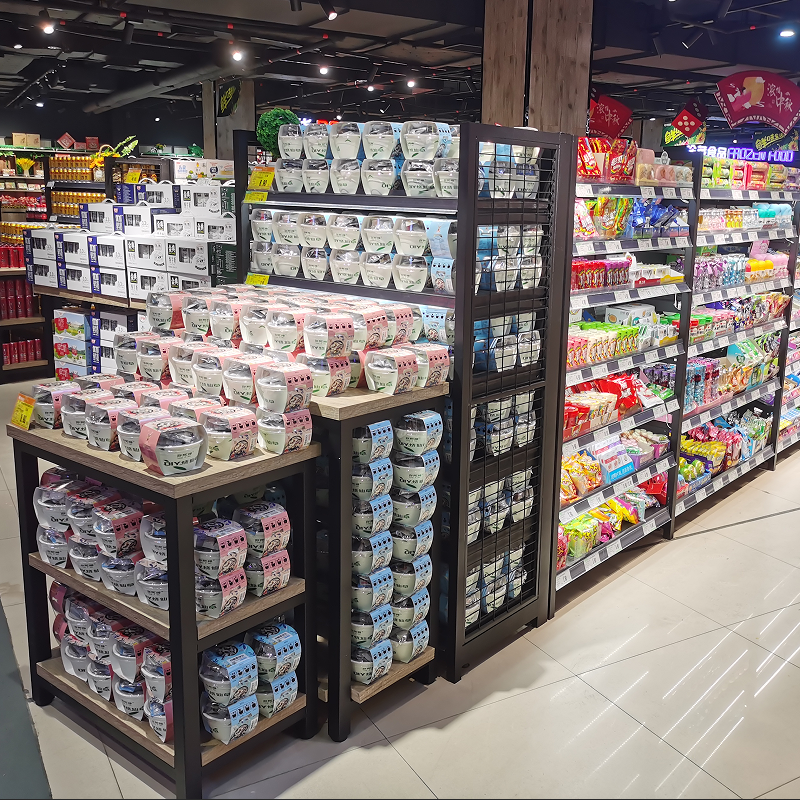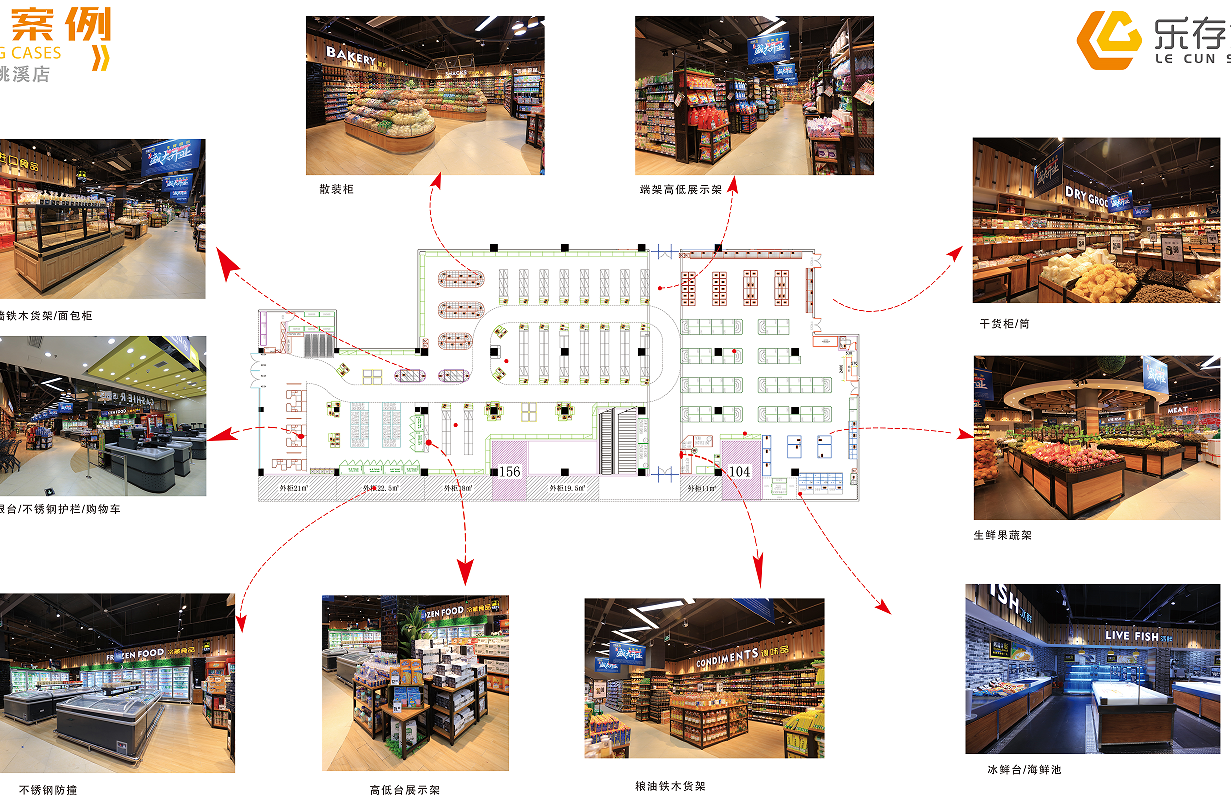
Designing a supermarket shelf layout that is both beautiful and practical needs to consider several factors, including customer experience, product display, space utilization, safety and easy maintenance. Here are some key steps and points to take in designing your supermarket shelf layout:
1:Understand customers' shopping habits: study customers' shopping paths and habits, and consider how to guide customers' natural flow during design to increase the exposure of products.
2:Reasonable space planning: According to the area and shape of the supermarket, the placement of the shelves should be reasonably planned to ensure that the channel is spacious and convenient for customers and staff.
3:Product classification and layout: the goods are divided according to categories, such as fresh area, food area, daily necessities area, etc., to facilitate customers to find and buy.
4:Shelf height and level design: the height of the shelf should be moderate, convenient for customers to pick up goods, but also convenient for staff replenishment. The level design should consider the size and weight of the product to ensure safety and stability.
5:Visual appeal: Use color, lighting and signage to draw customers' attention and highlight promotional items and new products.
6:Lighting design: Good lighting can enhance the display effect of goods, the use of appropriate lighting equipment, such as LED lights, both energy saving and enhance the attractiveness of goods.
7:Consider ergonomics: Ensure that the shelf design is ergonomic, convenient for customers to reach the goods, and reduce the inconvenience of bending and reaching.
8:Line planning: Design clear lines to guide customers through each area of the supermarket and increase the time they spend in the store.
9:Promotional area design: Design special promotional areas to display special items or seasonal goods to attract customers' attention.
10:Flexibility and adjustability: An adjustable shelving system is designed to adjust the layout of goods according to seasonal demand or promotional activities.
11:Use signs and signs: Clear signs and signs help customers quickly find the area they want.
12:Consider inventory and back office area: Design a reasonable back office storage area to facilitate replenishment and inventory management.
13:Technology integration: Consider integrating modern technologies such as electronic price tags, smart shelves, etc., to improve efficiency and customer experience.
Designing a supermarket shelf layout is a comprehensive process that requires constant adjustment and optimization to meet customer needs and business objectives. Through the above steps, you can design a supermarket shelf layout that is both beautiful and practical.








